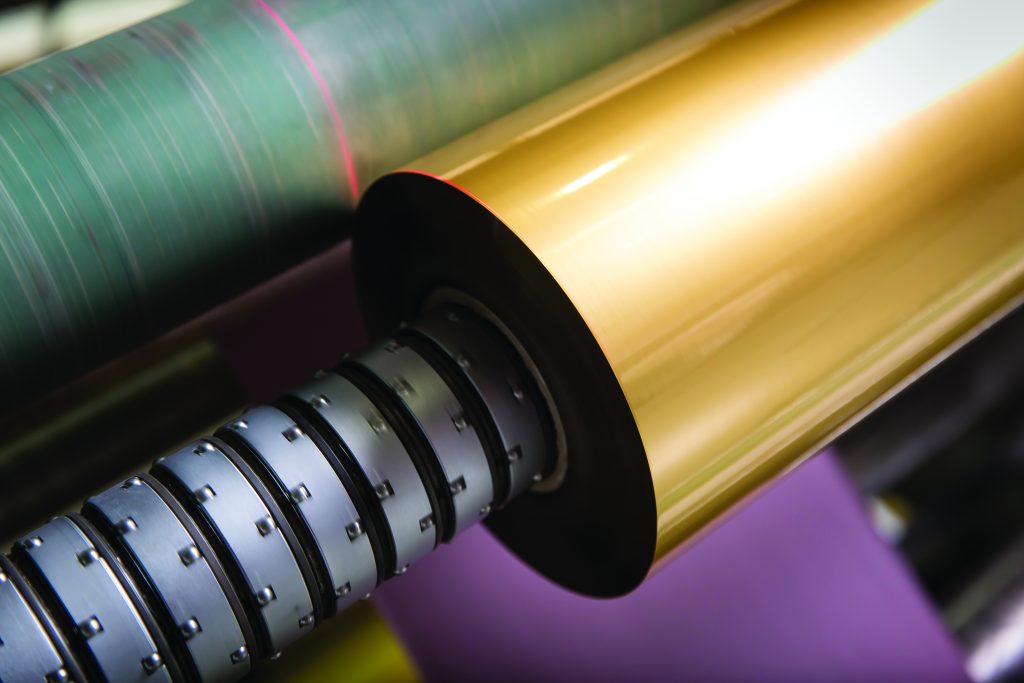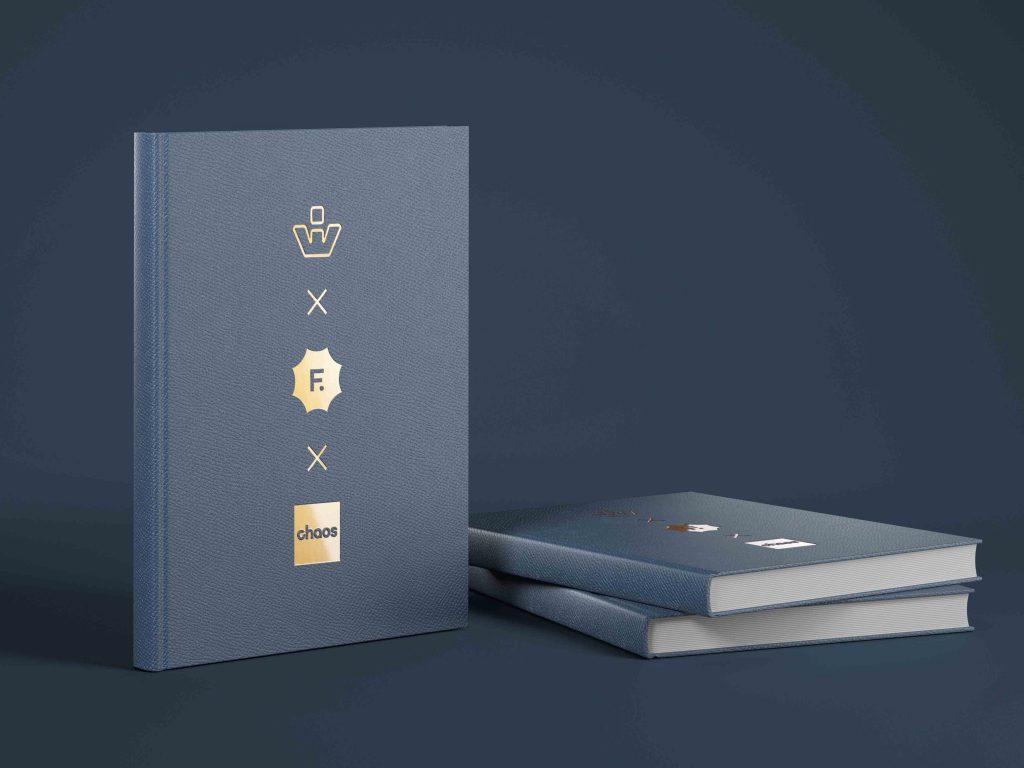Foilco Managing Director Paul Hornby demonstrates how foil can be used to enhance branding and positively reflect your eco-conscious values
Let’s take you into the world of duty free – the epitome of luxury brands. It’s the perfect showcase for premium brands from cosmetics to confectionery and fragrance to fine whisky. Nowhere will you find a better advert for the use of foil to add appeal to product packaging. But there is a perception that with a premium look comes a high environmental price.

“There’s no question that the use of foil stamping on packaging gives products a luxury look and feel unrivalled by other decorative finishes,” explained Paul, who added: “Packaging decorated with stamping foil rates more than 80 percent higher than non-foil packaging in quality, appeal, value, and brand awareness. But many think there is a trade-off between aesthetics and sustainability. Across the foil stamping industry, we’re trying to dispel these misconceptions.
“Over recent years, we’ve seen major brands ban the use of glitter due to the damaging effects of these microplastics on the environment. Similarly, many brands are moving away from foil lamination and metallised film on their packaging due to its inability to be easily recycled. We don’t want foils to be bunched into the same category as glitter and lamination.

“Foil, unlike these products, is environmentally friendly. All foil is recyclable, and no plastic is left on the product during the foil stamping process. This means that once the foil has been transferred onto paper or board, it is still fully recyclable. The foil coating is so thin that it dissipates in the re-pulping process. In fact, the coating weight is often less than conventional inks.”
Back to the lab
Foilco has really gone the extra mile to prove that card and paper packaging using foil is re-pulpable and recyclable. They approached testing lab, SGS-IPS Testing, to undertake an independent study to identify the re-pulpability of foiled product.
With this study, Foilco proved that 80 percent foil coverage of a product does not affect the re- pulpability of a recyclable material and, as such, can be recycled conclusively.
Paul continued: “This study gives creatives, printers, specifiers and brands the confidence to use foil on their packaging, particularly as an environmentally friendly alternative to metallised lamination. There is no need to compromise on design.”
Sustainable and functional
“Hot foil stamping is a dry, solvent-free process that uses minimal energy with no emission. Most foils are vegan and are unique in offering bright, mirror-like, metallic finishes that can be applied to a variety of substrates, such as plastic, metal, card, leather, and glass,” said Paul.

“Another key environmental benefit of foil is that it can be supplied in exact, customer- specific quantities, meaning minimal waste. This makes foil perhaps the only print embellishment where less truly is more.
“Furthermore, foil is an extremely functional material used in medical-grade printing, such as on blood bags and syringes. More recently we all handled foil stamping on Covid-19 test trays. Foil stamping is highly resistant to rubbing, scuffing and chemical attack making it ideal for regulatory and safety-critical marking.”
Zero Foil 2 Landfill
Foil is made up of several layers: a carrier (polyester film), a wax-based release coat, a lacquer, a metallised aluminium layer (only in metallic foils), and an adhesive coat. The only layer that isn’t degradable is the polyester film carrier. So, what is the foil industry doing about this carrier?
Paul said: “A strong, heat-stable film is needed to produce foil. Polyester is the best material as it enables much lighter, thinner films to be used. The standard film thickness is 12 microns. To give you a perspective of how thin that is, it’s around 3.5 times thinner than the average bin bag.
“Across the foil industry, we are continually looking at ways to further reduce the thickness of this film, with 6-micron film already being used in some applications. While we cannot remove the use of this film entirely in the production of foil, we can reduce the amount of foil waste and reuse the surplus as an energy fuel.”
Prismm Environmental Limited, sponsored by the British Printing Industry Federation (BPIF), runs the Zero Foil 2 Landfill Scheme. Waste foil is collected, baled into compacted cubes, then shredded and used as a sustainable fuel. Its high calorific value means that 12 tonnes of polyester film can replace 10 tonnes of fossil fuel.
Paul explained: “We are proud to be the first foil company in the world to join the Zero Foil 2 Landfill Scheme. Anything from 600kg to 26 tonnes of foil can be collected and every printer in the UK, no matter the size, can join the scheme.”
A proud heritage and a bright future
Foil stamping isn’t new. It has a timeless appeal that’s been used for hundreds of years, and its environmental credentials should see it being used for a long time to come.
“Foil is a beautiful product that has proven its worth over many years<” said Paul. “Foil stamping has the potential to transform packaging, bringing products to life without costing the earth.
“Unlike glitter and metallised lamination, foil is environmentally-friendly and has a bright future in helping make the packaging industry a leader in sustainable innovation and design.”
Case study: A Pukka partnership
Pukka Herbs is a market leader in the supply of nature’s finest herbs and a producer of beautifully aromatic teas and essential food supplements.
From an environmental standpoint, Pukka are easily one of the most inspiring and ethical companies around. Their vision is a world in which sustainable packaging is the norm and will form part of a truly circular economy.
Foilco foil was used on the Pukka Tea Selection Box, which is made from recycled paper and uses vegetable-based glues. A truly recyclable selection box.

Foilco recovered the waste from production and processed it through the Zero Foil 2 Landfill Scheme, converting it to sustainable fuel.
Pukka’s Tea Selection box won the 2019 Luxury Resource Efficient Pack award, proving beauty doesn’t cost the earth.
Environmental Foil Facts
- Foil is environmentally friendly
- All foil is recyclable
- Foil dissipates during re-pulping
- Foil can be cut to exact lengths reducing waste
- Any waste can go to the Zero Foil 2 Landfill Scheme and be converted into
sustainable fuel
- Foil is vegan
- Foil stamping is a dry, solvent-free process
- No emissions are created during foil stamping
- Foil stamping uses minimal energy




